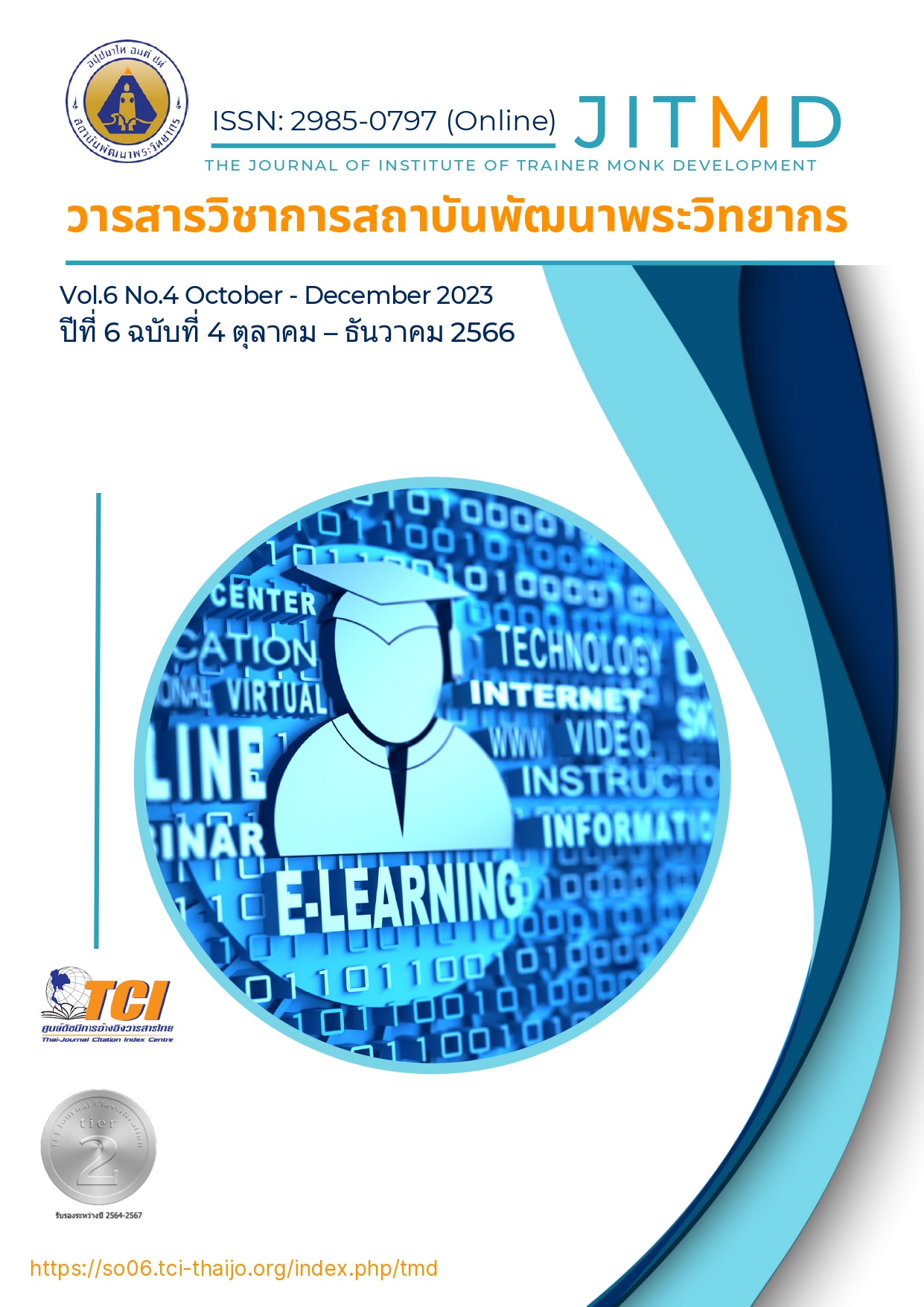Guidelines for Developing Creative Leadership of School Administrators to Increase Administrative Effectiveness in Sikhoraphum Integrated Network 2 under Surin Primary Educational Service Area Office 1
Main Article Content
Abstract
This research objectives were to 1) study and compare creative leadership of school administrators 2) to study the guidelines for developing creative leadership of school administrators to increase administrative effectiveness. The research population was teachers. The samples were 140 teachers in Sikhoraphum Integrated Network 2 under Surin Primary Educational Service Area Office 1. The samples in this research were teachers in Sikhoraphum Integrated Network 2 under Surin Primary Educational Service Area Office 1. The Sample size was determined from Craigie and Morgan's table and simple random. The research tools were questionnaires, the consistency index was 0.67-1.00, and the confidence was 0.92. Statistics used in data analysis were frequency, percentage, mean, standard deviation, one-way analysis of variance and content analysis. The results of the research were as follows: 1) The creative leadership of school administrators in the Sikhoraphum Integrated Network 2 under the Surin Primary Educational Service Area Office 1 was at a high level overall. The averages can be sorted from highest to lowest as follows: Team work, Flexibility and creativity 2) a comparison of the levels of creative leadership of school administrators in the Sikhoraphum Integrated Network 2 under the Surin Primary Educational Service Area Office 1, classified by work experience by Overall and each aspect were not different, and 3) guidelines for developing creative leadership of school administrators to increase administrative effectiveness. Executives must have the ability to effectively cope with changes and unexpected situations. There is an analysis and synthesis of the educational institution context in order to consider the cost of the educational institution in order to improve the efficiency of the educational institution. By focusing on learning quality, happiness, good health, aesthetics and values that are suitable according to the educational standards that learners should have.
Article Details

This work is licensed under a Creative Commons Attribution-NonCommercial-NoDerivatives 4.0 International License.
บทความที่ได้รับการตีพิมพ์เป็นลิขสิทธิ์ของวารสารวิชาการสถาบันพัฒนาพระวิทยากร
ข้อความที่ปรากฎอยู่ในบทความที่ได้รับการตีพิมพ์ในวารสาร ถือเป็นความรับผิดชอบของผู้เขียนบทความ และข้อคิดเห็นนั้นไม่ถือว่าเป็นทัศนะและความรับผิดชอบของกองบรรณาธิการวารสารวิชาการสถาบันพัฒนาพระวิทยากร
References
ซูไฮรี มะลีเป็ง. (2564). “ภาวะผู้นำเชิงสร้างสรรค์ของผู้บริหารสถานศึกษากับการบริหารงานด้านการพัฒนากระบวนการเรียนรู้ในสถานศึกษาสังกัดสำนักงานเขตพื้นที่ การศึกษาประถมศึกษานราธิวาส เขต 2”. วิทยานิพนธ์ครุศาสตรมหาบัณฑิต สาขาวิชาการบริหารการศึกษา. บัณฑิตวิทยาลัย: มหาวิทยาลัยราชภัฏยะลา.
ณณัฐ ช่วยงาน. (2565). “ภาวะผู้นำเชิงสร้างสรรค์ที่ส่งผลต่อประสิทธิผลในการบริหารสถานศึกษา สังกัดสำนักงานเขตพื้นที่การศึกษาประถมศึกษาระยอง เขต 2”. วิทยานิพนธ์ปริญญาครุศาสตรมหาบัณฑิต สาขาวิชาการบริหารการศึกษา. คณะครุศาสตร์: มหาวิทยาลัยราชภัฏรำไพพรรณี.
บุญชม ศรีสะอาด. (2545). การวิจัยเบื้องต้น. (พิมพ์ครั้งที่ 7). กรุงเทพฯ: สุวีริยาสาส์น.
สำนักงานเขตพื้นที่การศึกษาประถมศึกษาสุรินทร์เขต 1. (2565). รายงานผลการดำเนินงานประจำปีงบประมาณพ.ศ.2564. สืบค้นข้อมูลเมื่อวันที่ 31 สิงหาคม 2565 จาก http://www.surinarea1.go.th/srn1/index.php/rpct/1783-2564-3
อัยริน สมาแอ. (2562). “การศึกษาภาวะผู้นำเชิงสร้างสรรค์ของผู้บริหารสถานศึกษา สังกัดสำนักงานเขตพื้นที่การศึกษาประถมศึกษายะลา เขต 3”. สารนิพนธ์ปริญญาศึกษาศาสตรมหาบัณฑิต สาขาวิชาการบริหารการศึกษา. บัณฑิตศึกษา: มหาวิทยาลัยหาดใหญ่.
เอกรินทร์ ไชยแสง และคมสันทิ์ ขจรปัญญาไพศาล. (2565). การศึกษาแนวทางการพัฒนาภาวะผู้นำเชิงสร้างสรรค์ของผู้บริหารสถานศึกษา สังกัดสำนักงานเขตพื้นที่การศึกษามัธยมศึกษา เขต 22. วารสารการบริหารการศึกษาและภาวะผู้นำมหาวิทยาลัยราชภัฏสกลนคร, 10(38): 215-224.
Krejcie, R.V. and Morgan, D.W. (1970). Determining Sample Size for Research Activities. Educational And Psychological Measurement, (30)(3): 607-610.


